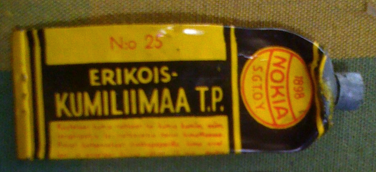
When the iPhone was announced in January 2007 I tried to envision the competitive response from Nokia. The method involved some knowledge of the product development cycle that I was faintly aware of.
Here is what I predicted:
- 2007.There would be no response within the first year, meaning there would be no perceived threat of any kind. No process change, No roadmap changes and no business review. Apple is not considered a competitor.
- 2008.There would be plans made to respond with press releases, dismissing the challenge as a non-threatening “positive” for the industry. No process changes, no product plan changes, no business model changes. Apple would not be considered a competitor except in “high end multimedia” (invisible in any of the segments Nokia uses to define markets).
- 2009.In the third year, product development teams would be asked to begin roadmapping some of the hardware features that would keep Nokia ostensibly competitive (unfortunately for Nokia, hardware is not what sells iPhones). Results from these efforts would emerge in 18 to 24 months. Apple not considered a competitor except in “high end converged devices” (i.e. a few consumer segments/categories are considered vulnerable).
- 2010.Realization that iPhone is a threat from new dimensions (user experience). Planning begins on reshaping the software base as a market-driven (not technology-driven) asset (5 year cycle). Apple begins to be evaluated as a competitor in devices and services, although still not compliant with current market definitions.
- 2011.The realization that the iPhone competes as a platform. Planning begins on repositioning Symbian/Ovi. Products planned in 2009 begin shipping–this means first capacitive touch screens but crude, almost unusable software.
- 2012.The realization that the iPhone is an integrated product and that integration is a key to competitiveness enters management consciousness. Planning begins on organizational change and a realignment of incentives to account for this new threat. Crude shuffling of internal assets and management musical chairs begins. Organizational change amounts to mostly new names for old departments. Touch screen phones with slightly better software begin shipping (similar in feel to Blackberry Storm from 2008). Incentives are added for employees (in across-the-board performance objectives) to hit user experience targets.
- 2013.Management begins planning a new organization structure that takes into consideration the fundamental causes of iPhone’s success: integration, software, user experience over the objections of sales and markets org that depends on shipping plastic to distributor. Another reorganization that is slightly more rational and aligned with the market is initiated. The plan is to have the assets in place by 2019 to compete effectively as a platform.
- 2014.First products that are roughly comparable with iPhone version 1 begin shipping. The required software redesign started in 2010 is coupled with the integration efforts. Nokia’s response to the iPhone has begun.
I tried to revisit the prediction to update it with anecdotal evidence but so far there has been little activity that has affected the trajectory.
- Note 1: Whether an iPhone v1.0 shipping in 2014 would be competitive is left as an exercise to the reader.
- Note 2: The N97 shipping in 2009 is the result of work begun in 2007, it has had no influence at all from the iPhone.
- Note 3: The Microsoft response cycle is slightly shorter (perhaps 5 years vs. 7) but they lose a year in efforts to integrate with licensees. As neither MSFT nor GOOG are able to integrate products, they will never be able to actually deliver a competitive product. In this regard, Nokia has an advantage.
- Note 4: The key takeaway from this analysis is that the industry standard product cycle for an integrated, platform based product is 5 to 8 years and if one competitor can achieve a 2 to 3 year cycle, then the more nimble competitor can “turn inside” the industry and, within two cycles, dominate it. Although smaller competitors are able to turn product faster, they are usually unable to sustain the platform heavy lifting (which takes an order of magnitude more effort/assets).
Discover more from Asymco
Subscribe to get the latest posts sent to your email.
